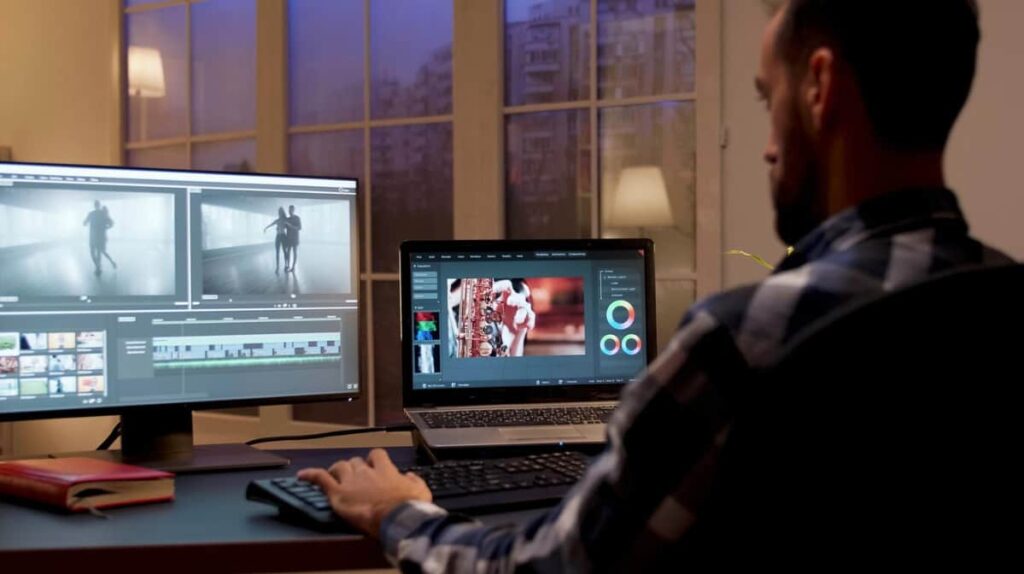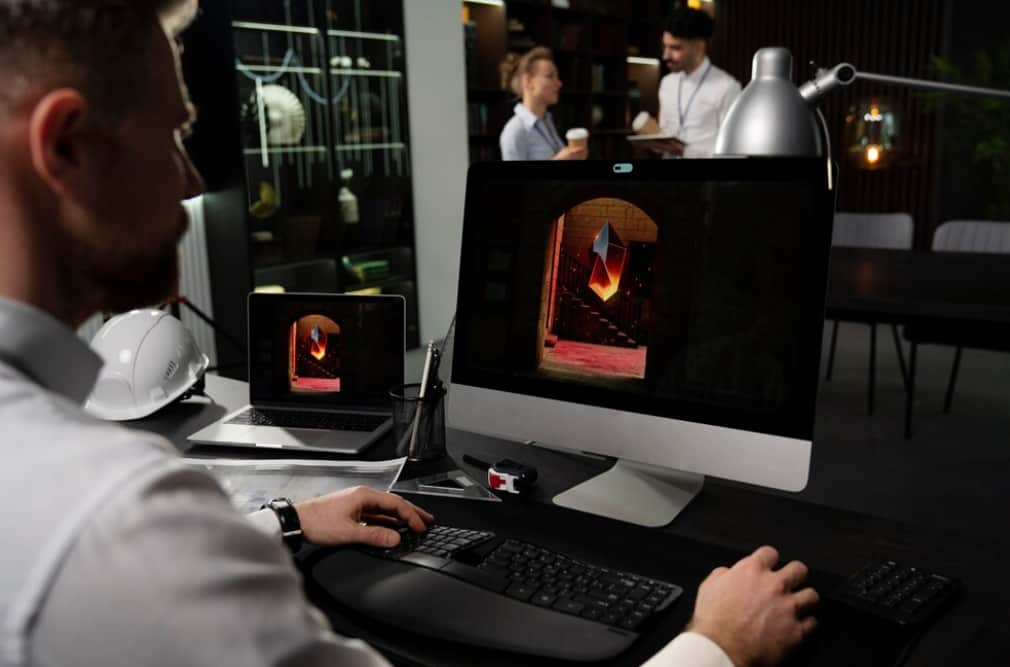The Compositing Process in Animation Explained
In the world of animation, mastering the production pipeline is crucial to creating top-notch work. One of the essential stages in the pipeline is post-production, where the animation is fine-tuned and elegance is added. In this phase, post-production artists employ a variety of tools to refine the project’s appearance, creating a final outcome that both meets their vision and upholds professional standards.
If you’re interested in animation compositing, you may also like learning about transmedia, a concept that expands storytelling across multiple media platforms, linking different aspects of media production and narrative techniques.
What is Animation Compositing?
- Compositing is a crucial phase in the post-production process of 3D animation, typically carried out in animation studios;
- This stage involves the integration of various render passes from the production phase;
- The task encompasses blending these passes or incorporating additional imagery and adjustment layers to achieve a unified visual composition.
The complexity of compositing varies greatly. It can range from the straightforward task of merging a couple of layers to the intricate challenge of synchronizing and fine-tuning the properties of hundreds of layers. These properties might include aspects like depth of field and color. It’s during this stage that the animation’s final appearance is refined and brought to life. In some cases, the integration of 2D visual effects is also undertaken to enhance the final output.
The Role of Compositing in 3D Animation

Compositing, a term with roots in photography, refers to the process of merging two or more distinct images into a single composite image. This technique is designed to craft an illusion where all the combined elements appear as part of a cohesive scene. It encompasses a range of applications including adding special effects, extending stages, creating environments, and replacing blue or green screens.
In the realm of 3D animation, compositing involves the integration of multiple render passes or the addition of layers to produce a unified image or sequence of images, each with specific characteristics.
Tracing its origins back to the 19th century, compositing techniques have evolved significantly. While early methods were non-digital, modern compositing, especially in 3D animation, predominantly utilizes digital tools. Today, compositors in animation studios employ various software programs to refine digital renders and incorporate special effects, showcasing the technological advancements in this field.
Types of Compositing Techniques
Compositing encompasses various methodologies, each with unique material combinations and applications. Among the most prevalent in the industry are:
| Composite Type | Description |
|---|---|
| Fiber-Reinforced Composites | These composites incorporate fibers of one material into a matrix of another, enhancing strength and durability. |
| Particulate Reinforced Composites | This type combines particles into a matrix material, enhancing properties like wear resistance or conductivity. |
These two categories are particularly widespread due to their versatility and the broad spectrum of material characteristics they can impart to different surfaces. They serve an array of industries, providing tailored solutions to meet diverse structural and design requirements.
The Importance of Compositing in Animation
The compositing phase in a 3D animation studio is a key step for saving substantial time and resources. Rendering, a process where the computer converts 3D data into 2D images or frames, is inherently time-intensive. This is due to the substantial amount of data and calculations involved, even when utilizing the latest hardware and software.
- To optimize this process, 3D scenes are often rendered in separate layers or ‘Render Passes’. This approach allows for greater control over various scene elements. For example, individual objects can be rendered in isolation, with other objects hidden during the same pass. This technique enables detailed adjustments in lighting, color, and other aspects, allowing for the creation of multiple rendered options. Consequently, it eliminates the need for repeated full-scene rendering;
- If rendering were to be done in 3D for each alteration, it would require multiple iterations, placing a heavy burden on studio resources. Therefore, final rendering typically occurs post-compositing in most studios. If a scene element, such as a single 3D asset, needs modification, only the affected part is re-rendered rather than the entire scene;
- Furthermore, the final rendering of a sequence using 2D images post-compositing is considerably quicker compared to rendering a 3D project from scratch. This is because it bypasses the need to process every piece of 3D data for each asset in the scene. The sequence of render passes and layers are merged, color-corrected, and refined before proceeding to the final stage of the production pipeline for the ultimate rendering.
The How-To of Animation Compositing
The process of compositing in animation requires careful precision. If a change occurs in the final scene of a project rendered in 3D, all teams would need to revisit the re-rendering process. To avoid this repetition, compositing is performed after final rendering in most 3D production houses, as this eliminates the need to re-render an entire clip should a change be required.
Role and Responsibilities of a Compositing Artist
In a 3D animation studio, a compositing artist plays a pivotal role in the final stage of the animation production process. This professional is tasked with amalgamating various elements crafted by preceding departments, such as computer-generated animation, 3D visual effects, graphics, 2D animation, live-action footage, and static backgrounds. The ultimate goal is to produce a cohesive and screen-ready render.
The core responsibility of a compositing artist is to elevate the visual quality of shots to meet the expectations of the project’s decision-makers and to ensure consistency in quality across the project. This involves integrating 3D scenes while meticulously balancing technical and artistic elements of the final output. Key tasks include enhancing color and lighting, adding motion blur, and incorporating 2D effects to achieve the desired visual impact.
Effective collaboration with other departments involved in the compositing process is also essential. This necessitates strong communication skills and the ability to foster productive relationships within the team and across different teams in the animation studio, ensuring a smooth and efficient workflow in the compositing phase.
Career Opportunities in Compositing
The field of compositing offers diverse career opportunities. Most compositing artists are employed in the post-production animation industry, but opportunities also exist in photography. Compositors work at the end of the production pipeline, often dealing with a wide range of materials from various sources.
Comparing 3D and 2D Compositing

While 3D compositing might seem superior due to its high-tech nature, 2D compositing shouldn’t be overlooked. It’s faster and better suited for smaller-scale projects. It’s recommended to experiment with both formats to identify which best meets your project needs.
Compositing Essentials for Beginners
For beginners venturing into the world of animation compositing, understanding the importance of this process and its role in the animation pipeline can provide a strong foundation. Mastering the basic principles of merging and adjusting layers is a key starting point.
Tips and Tricks for Successful Compositing
Mastering compositing requires a combination of technical skills, creativity, and eye for detail. Keeping up-to-date with the latest tools and techniques and learning from experienced professionals can help hone your compositing skills.
Conclusion
Compositing is a critical aspect of the 3D animation process, bridging the gap between raw renders and the final polished product. By saving time and resources in the production process, compositing proves its worth in any 3D animation studio. Whether it’s fiber-reinforced or particulate reinforced, the techniques used in compositing bring a unique blend of creativity and technology to the world of animation. For aspiring animators and experienced professionals alike, mastering the art of compositing is an invaluable skill that can set your work apart.
The art of animation compositing is a vital facet of the 3D animation pipeline, masterfully meshing varied elements from distinct sources into a seamless and visually harmonious composition. It’s a transformative process that imbues raw renders with depth, beauty, and professional polish. The judicious leveraging of compositing not only significantly streamlines workflow in an animation studio by saving time and resources but also provides essential creative control over the final output. Irrespective of whether the project leans on the 2D or 3D compositing spectrum, it’s the compositing stage that ultimately brings the animated narrative to vibrant, compelling life.